it's hidden in plain sight
How would a city talk about itself? One of the landmark characteristics of urban environments is the diversity of its inhabitants, on many different levels: race, gender, income, political views and affiliations, among many others.
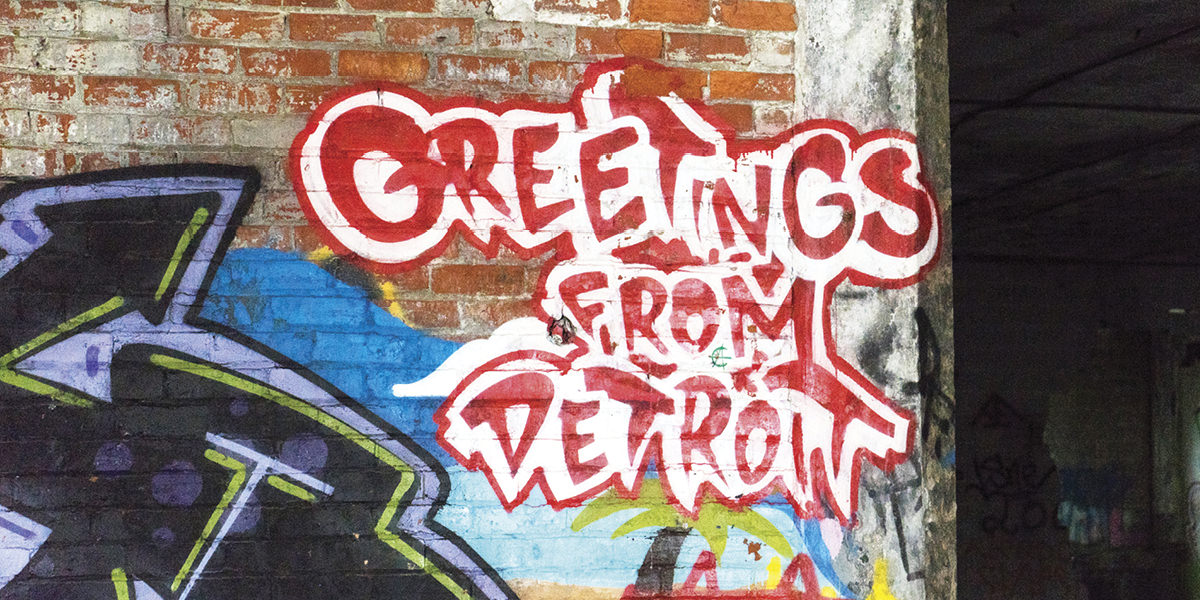
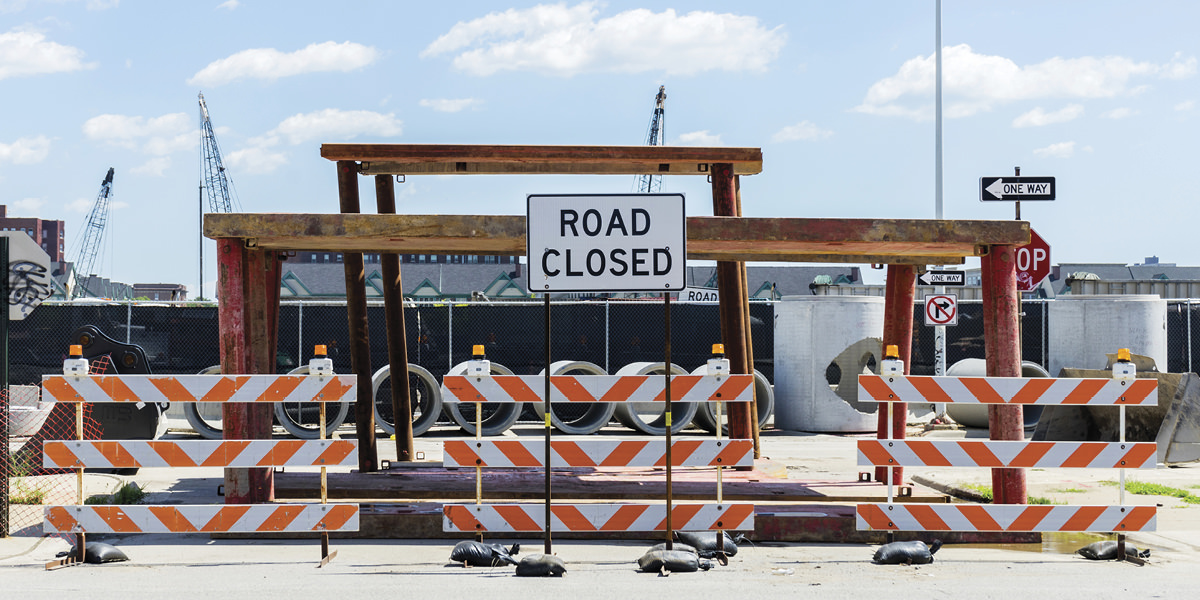
Urban strange loops
Even though there may be a wide variety of opinions, a city is not defined single-handedly by any one of them, even though some are louder or more visible than others.
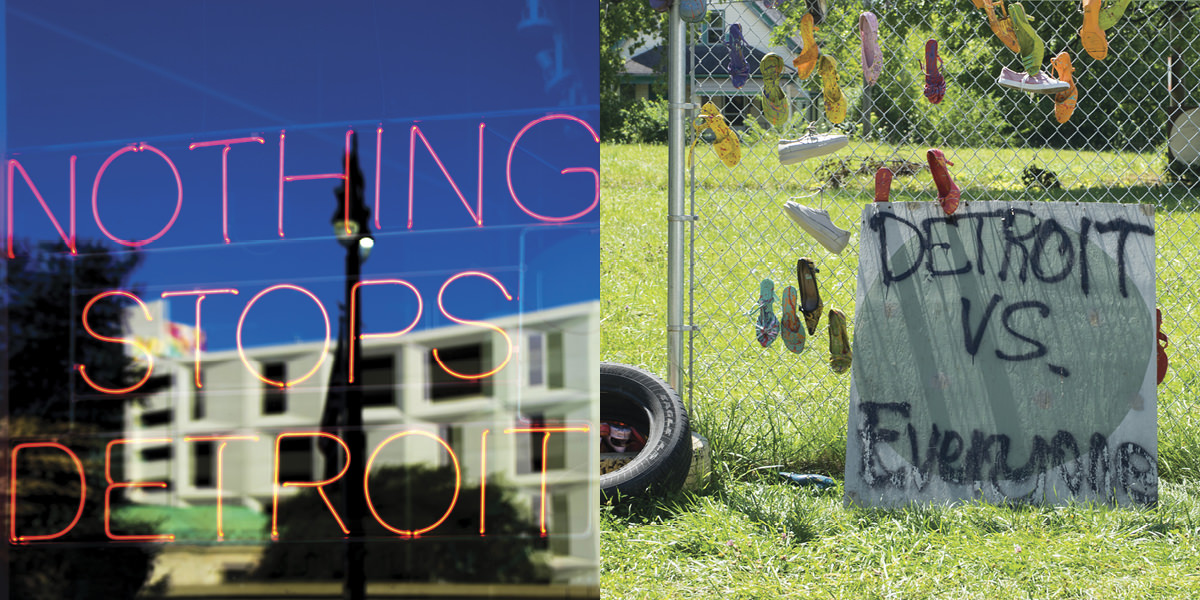
Within an environment of many different and sometimes colliding narratives on the city, how could an identity be grasped? Is it even possible? In other words, what may be a non-reductive strategy for visualizing the different voices that add up to build a city’s own identity, hopes, and dreams? Who drives the narrative?
An important reference for this research is the concept of the mediascape, coined by anthropologist Arjun Appadurai, that refers to the “imagery that comes from books, magazines, television, cinema, and advertising that can directly impact the landscape (in the form of posters and billboards) and also subtly influence, through persuasive techniques and an increasingly pervasive presence, the way that people perceive reality”. What kind of reality is Detroit currently navigating? How do you make sense of a fallen city that has kept skyscrapers from its once-glorious past, newly gentrified pet parks and abandoned industrial plants, all reachable within a 10 minute walk?
The project took off by registering urban textuality indiscriminately, scraping messages about the city from everywhere: techno records, billboards, stickers, graffiti, interviews, debris, newspaper articles, social networks, websites and interviews, casting a net as wide as possible in order to obtain as many stakeholders’ viewpoints as possible.
Material words
Text, or language, by itself, usually fails to top other expressions, like architecture or politics, as a material to understand the vibe of a city. However, looking closer at written messages, disregarding their humble or high-brow origins, it is possible to collect a very wide collection of intentions. And then, taking language as a material allows it to be bent, twisted, distorted or rearranged, and thus challenging its apparent meaning, without altering it altogether.
As mentioned before, it is text that guides us through a city, but it’s very ubiquity makes it almost invisible. One way to boost the visibility of certain messages is to combine them with other unrelated or opposed messages, and doing so in search of a little impasse, a glitch that breaks the original façade of the intended meaning and puts it in relation with other postures. This way, new, unexpected meanings or interpretations become possible and problematic.
Urban haikus
With a diverse set of messages collected from as many sources as possible, the search for these semantic glitches return a conflictive mix of nuanced permutations. Some may be more straightforward, others may be less defined and resist easy categorization, well beyond the obvious juxtaposition of gentrification and decay.
Full list here.
Visible language
Double-sided protest signs that have opposing messages, reflecting the complexity of a single person’s position towards Detroit, and allow to talk back to the city in a very public manner.
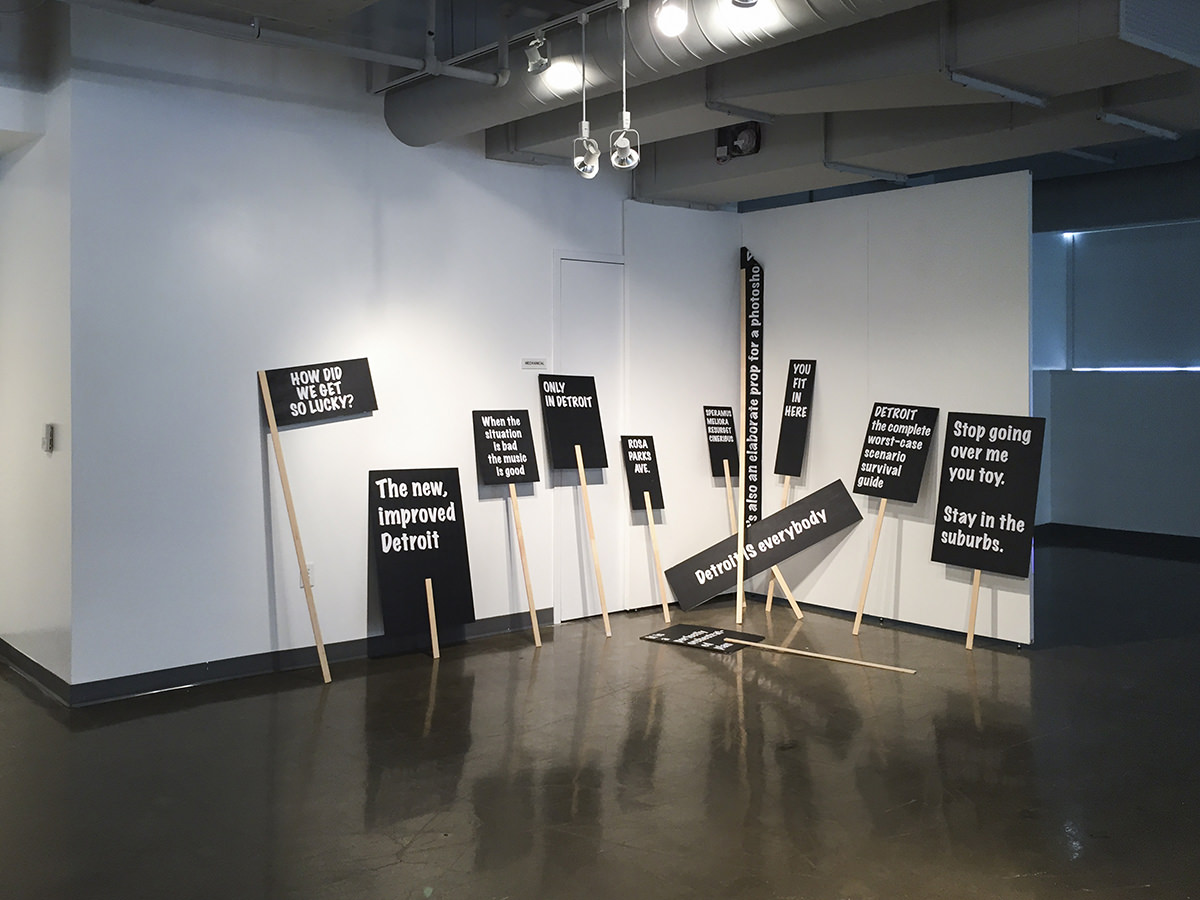
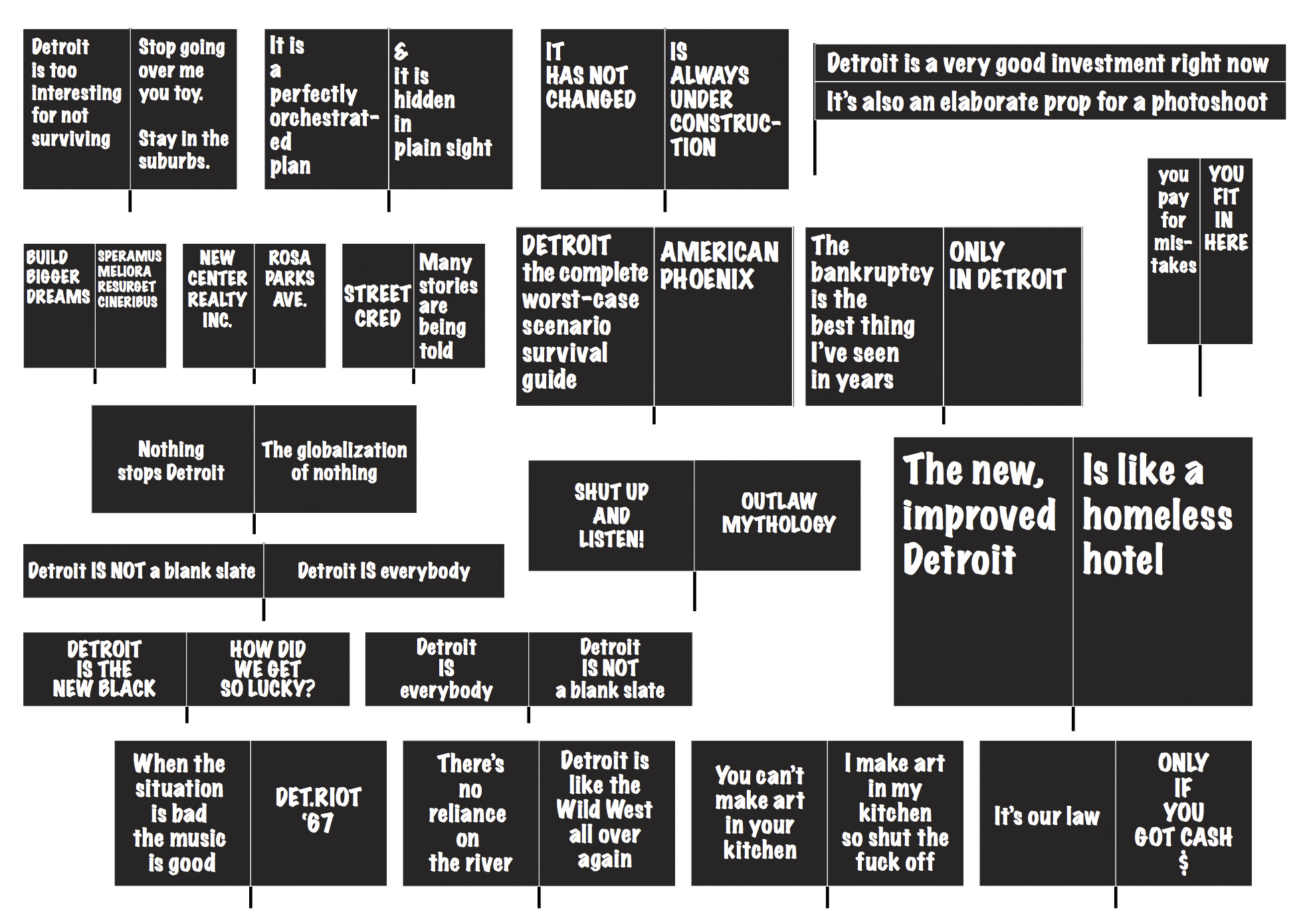
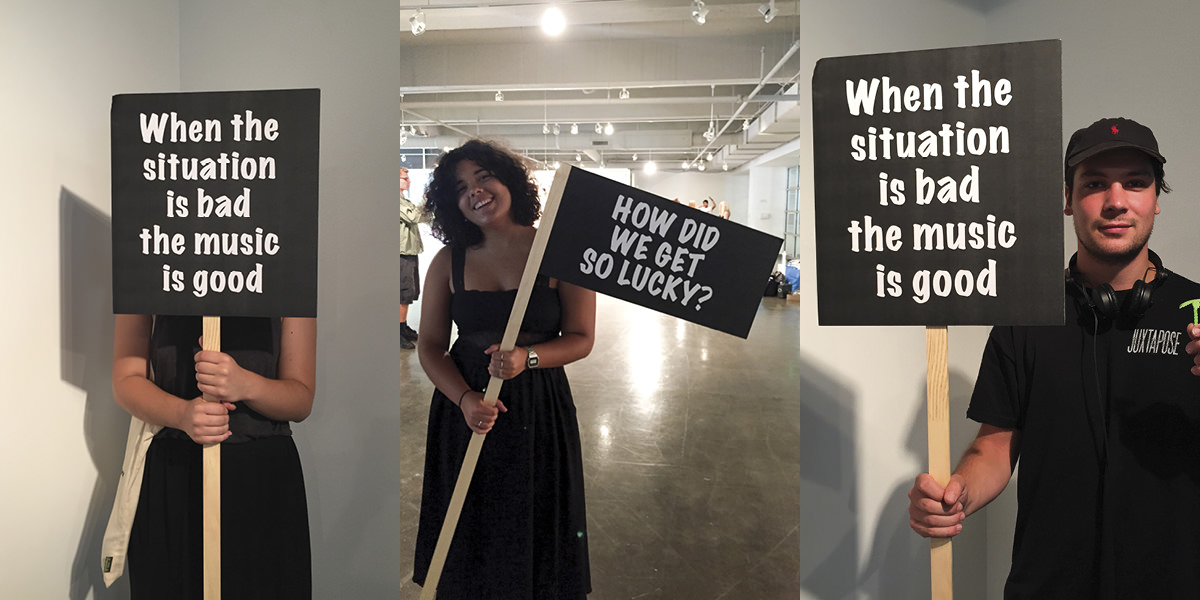
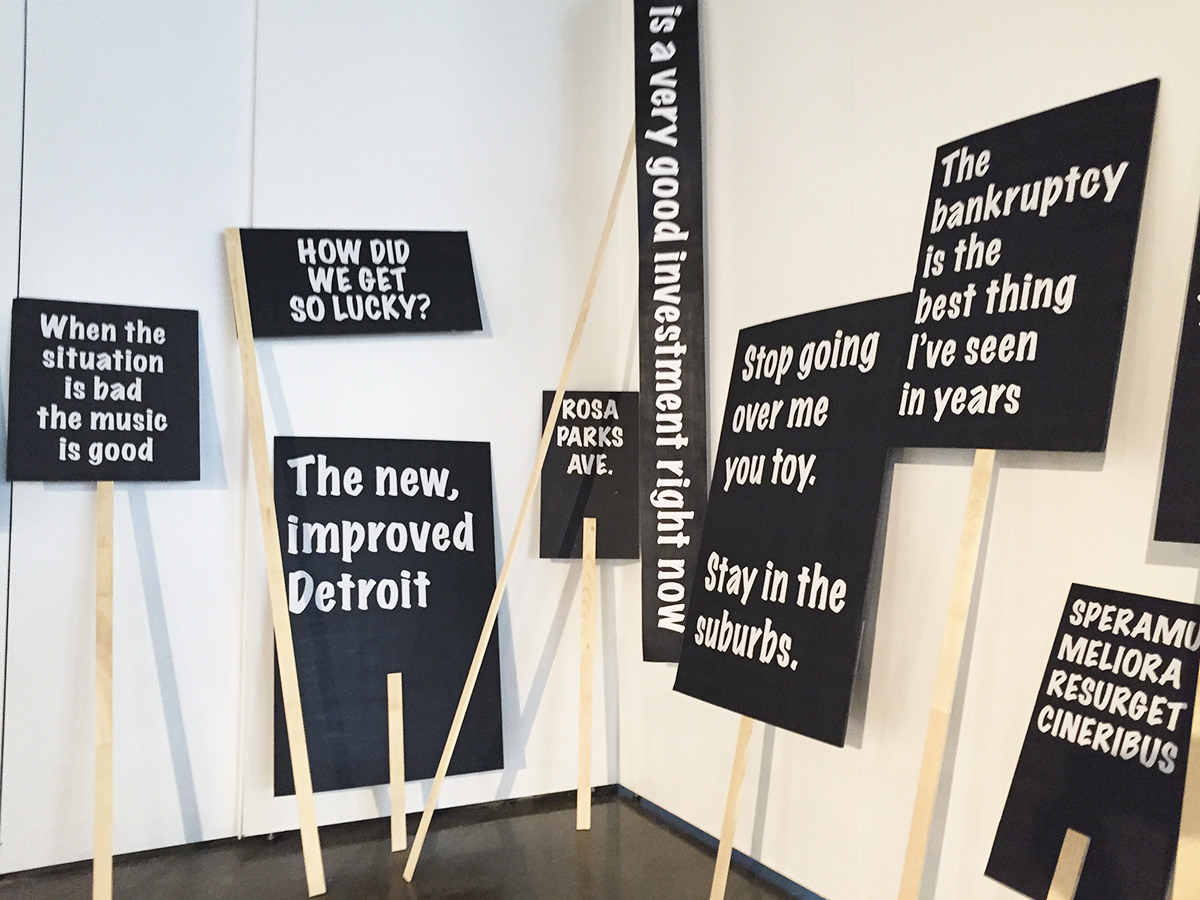
While still text, they are activated by its users, and they in turn are recontextualized by the text itself, depending on the message shown: a real-estate lobbyist, a tourist, a social activist, a DJ, or just a protester.